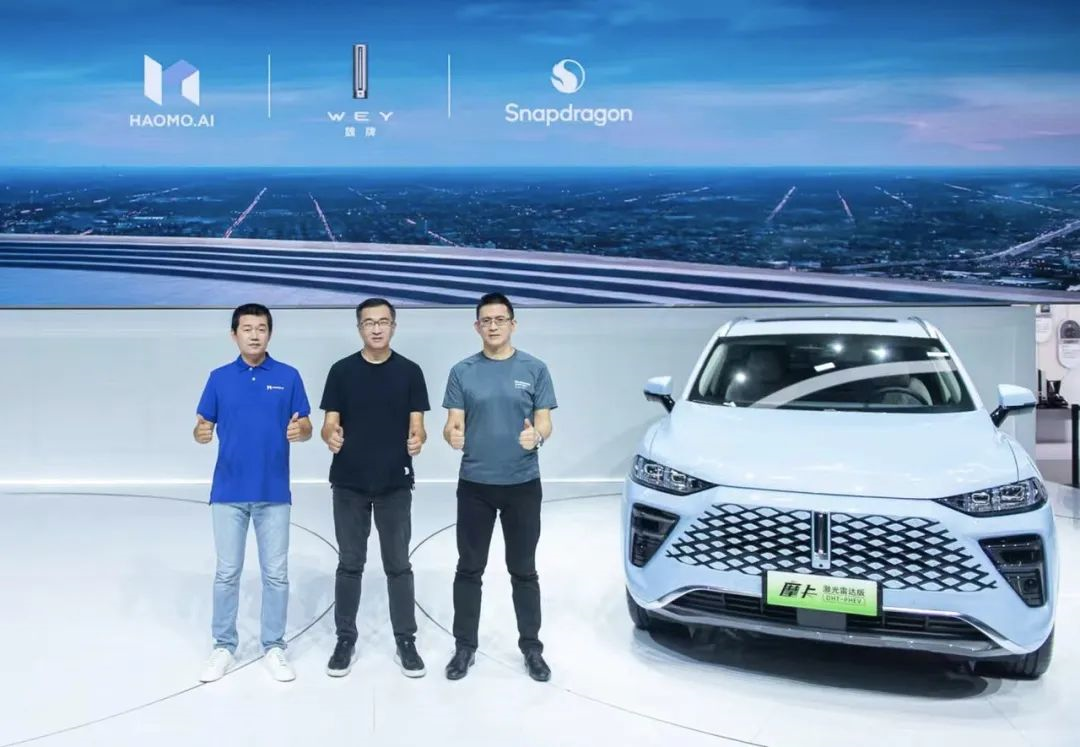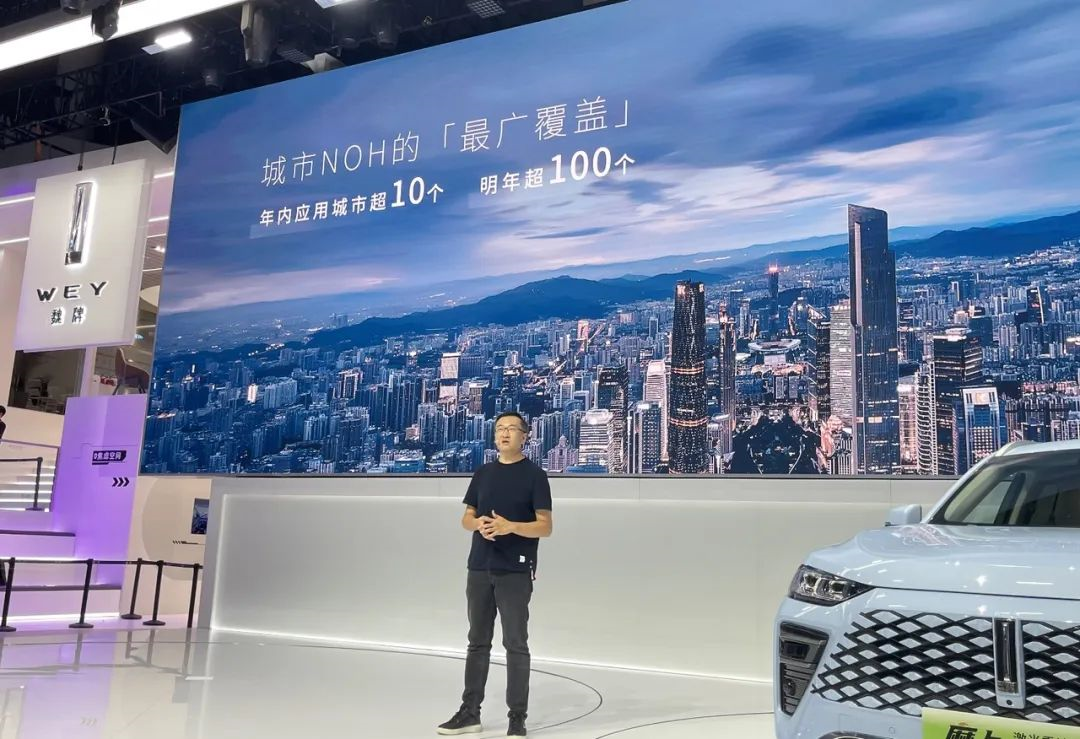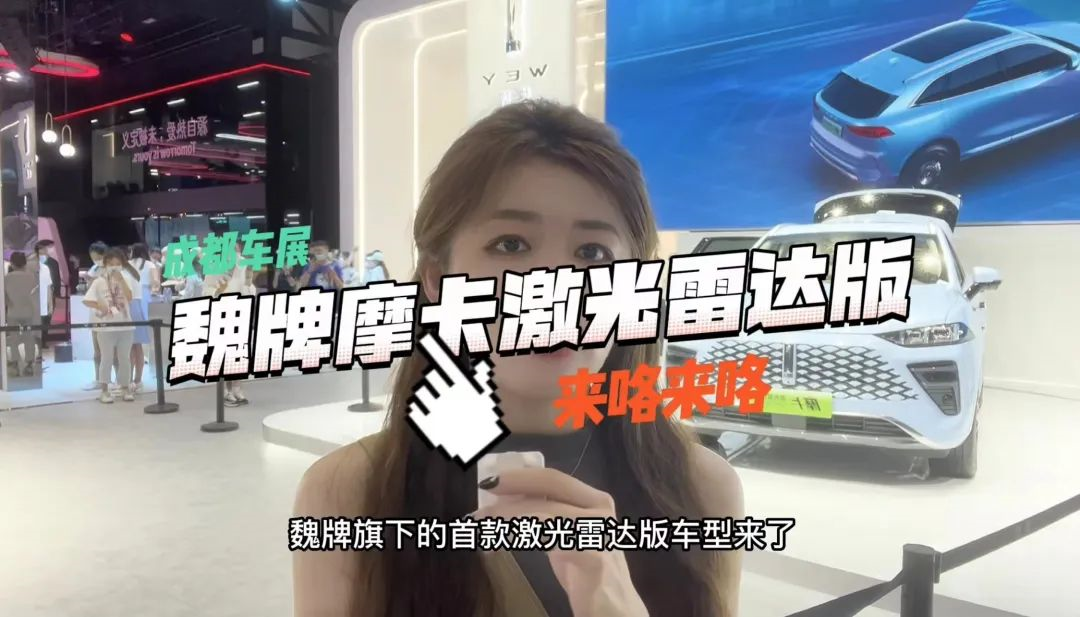Author: DAMEILI
Pioneer

Many domestic car companies are competing for the top spot in city-level navigation-assisted driving. The earliest voice in this field was the NGP system from XPeng Motors, followed by the NCA system of Alpha S Huawei HI Edition by Jihoo, and the City NOP function under NIO’s NAD system.
At the Chengdu International Auto Show, the Mocha DHT PHEV model, owned by Great Wall Wei brand, also launched a version with a lidar. The goal is to achieve city-level navigation-assisted driving, making the competition in this field even more fierce.
Prior to this, the autonomous driving innovation enterprise, Neolix Zhixing, had already implemented a navigation-assisted driving system (Highway NOH) for the Wei brand Mocha model in high-speed scenarios. With the addition of lidar, this car has the potential to become the first domestic model to achieve navigation-assisted driving from high-speed to city-level.
In urban commuting scenarios, the City NOH can achieve core functions such as automated lane changing and overtaking, traffic light recognition and control, complex intersection navigation, unprotected left and right turns, and can also deal with complex urban traffic scenarios such as close-range cut-ins by other vehicles, blockages and occupation of lanes, crossroads, tunnels, and overpasses, with a core city scenario coverage rate of over 90%.
Behind the City NOH system are three important forces, namely the entire vehicle company Great Wall, the autonomous driving system company Neolix Zhixing, and the autonomous driving chip supplier Qualcomm.
According to the plan, the three parties will jointly promote the coverage of City NOH in 10 cities, and plan to cover more than 100 cities by 2023, with great ambition and arduous tasks.
Technical system

In terms of hardware, the Wei brand Mocha DHT PHEV with a lidar is equipped with two lidars, 12 cameras, 5 millimeter-wave radars, and 12 ultrasonic radars, thereby achieving higher-level automated assisted driving capabilities.
With the installation of LiDAR sensors, the appearance of the MoKa DHT PHEV has undergone a complete redesign. The original decorative shape of the air intakes on both sides of the front face has been changed to sharp angled triangles. The new grille features a borderless design with a dot-matrix chrome decoration inside.
The new car will be equipped with the Momenta 3.0 automatic driving calculation platform based on the Snapdragon Ride platform by Qualcomm, which is equipped with 5nm Qualcomm Snapdragon 8540 and 7nm Qualcomm Snapdragon 9000 chips, providing a single-board computing power of up to 360 TOPS. This computing power level is leading among domestic mass-produced models.
On the algorithm level, Wei Pai MoKa City NOH applies Momenta’s MANA automatic driving data intelligence system to integrate vision and LiDAR data at the bottom algorithm level. This enables deep perception of space, time and sensors, making the system’s cognitive decisions more human-like, and more accurate in its response.
The city NOH system utilizes the technology development route of “heavy sensing, light mapping” to avoid excessive reliance on high-precision maps, enabling vehicles to rely on their own fused perception to accomplish high-end intelligent assisted driving and achieve short-term, large-scale coverage in urban areas.
The MoKa DHT PHEV was released as early as March of this year, positioned as a mid-size SUV, with two models available with a price range of 2.95 – 3.15 million yuan. Adding two LiDAR sensors will result in a certain degree of price increase.
The new car is equipped with a 1.5T engine and an electric motor to form a plug-in hybrid system with a maximum engine power of 115kW and front and rear drive motor maximum power of 135 kW, matched with a DHT gearbox. The pure electric range of the two-wheel drive model is 204 kilometers, with a fuel consumption of only 5.55L per hundred kilometers.
It is not known how much the MoKa DHT PHEV will be marked up with the addition of two LiDAR sensors. It is reported that the new car is scheduled for mass production in September and will be released in 2022.
The final implementation of the city NOH depends on the combined efforts of Momenta, Qualcomm, and Wei Pai.
This article is a translation by ChatGPT of a Chinese report from 42HOW. If you have any questions about it, please email bd@42how.com.
